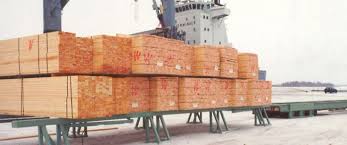Forest shipping, the transport of hardwood from jungles to digesting facilities or market segments, facial looks numerous problems, prompting the introduction of innovative strategies to address them. Here’s an research of the difficulties came across in forest shipping as well as the impressive approaches simply being implemented to get over them.
1. Ground and Accessibility:
Forests are usually positioned in distant or durable terrain, posing considerable obstacles for transportation. Inaccessible streets, sharp ski slopes, and negative climatic conditions can hinder traditional shipping techniques. To overcome these problems, innovative solutions like drone delivery and autonomous cars are now being investigated, offering efficient and cost-powerful options for hauling timber in difficult environments.
2. Environment Influence:
forest shipping procedures could have undesirable environment effects, such as deforestation, habitat devastation, and contamination. Impressive techniques including environmentally friendly recording methods, reforestation initiatives, and the use of biofuels are carried out to minimize ecological influence. In addition, advancements in logistics search engine optimization and route organizing are aiding decrease gasoline usage and carbon dioxide emissions in forest shipping operations.
3. Engineering Advancements:
The incorporation of advanced systems is revolutionizing forest shipping, boosting productivity, safety, and sustainability. Genuine-time keeping track of techniques, RFID tagging, and blockchain technologies are now being utilized to monitor wood from its source in the forest to the last vacation spot, ensuring visibility and accountability through the source sequence. In addition, developments in electrical and hybrid automobiles are lowering reliance upon standard fuels, resulting in eco-friendly forest shipping procedures.
4. Regulatory Conformity:
Forest shipping operations must adhere to many polices governing hardwood harvesting, transportation, and business. Non-agreement may result in penalties, lawful penalty charges, and reputational injury. To get around these regulatory difficulties, revolutionary solutions including compliance managing software and digital make it possible for solutions are being implemented, streamlining administrative functions and making sure adherence to regulatory specifications.
5. Supply Chain Resilience:
The hardwood business, like many more, encounters interruptions a result of disasters, pandemics, and geopolitical instability. Constructing resilience in the forest shipping source sequence demands revolutionary strategies such as diversifying transportation ways, stockpiling critical supplies, and utilizing information analytics to predict and mitigate potential disruptions. Collaborative relationships between business stakeholders also perform an important role in maximizing provide sequence strength and ensuring continuity of procedures.
To conclude, forest shipping encounters multifaceted challenges that demand innovative options. By leveraging engineering developments, adopting lasting practices, ensuring regulatory conformity, and cultivating provide sequence resilience, the forestry industry can overcome these difficulties and navigate towards an even more sustainable and successful long term.
